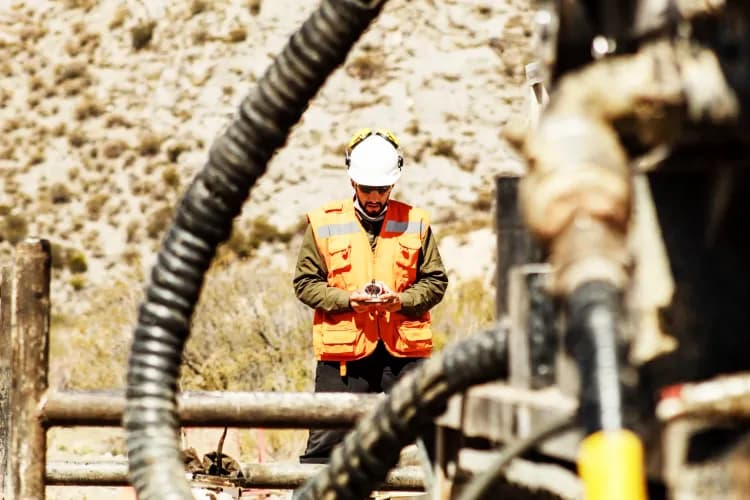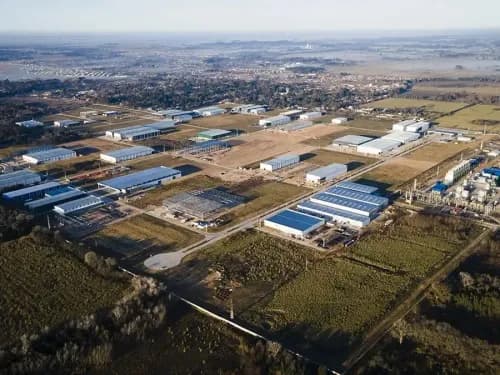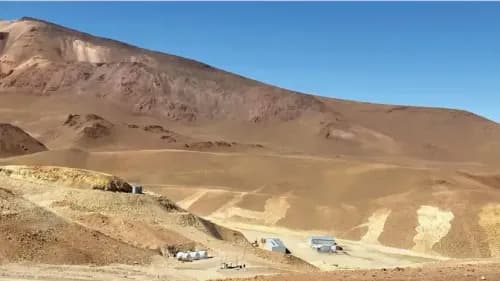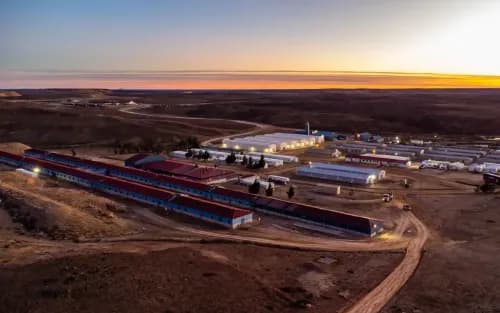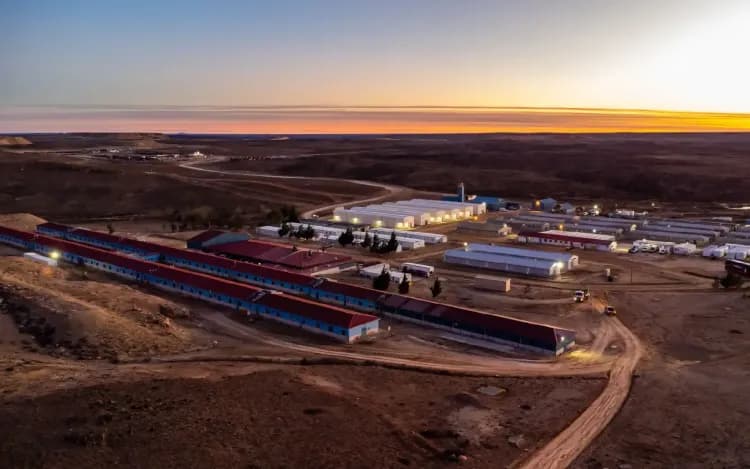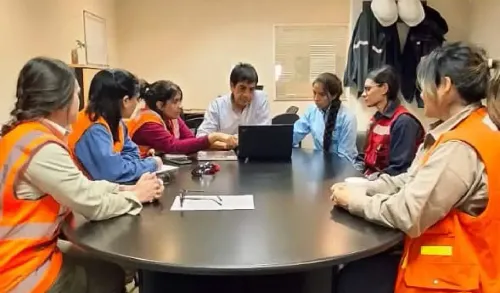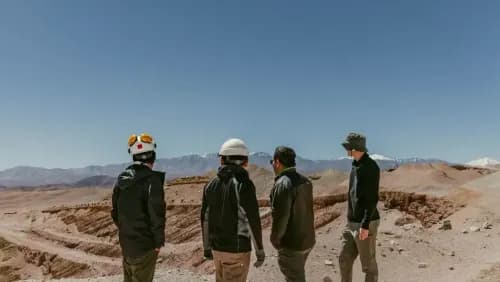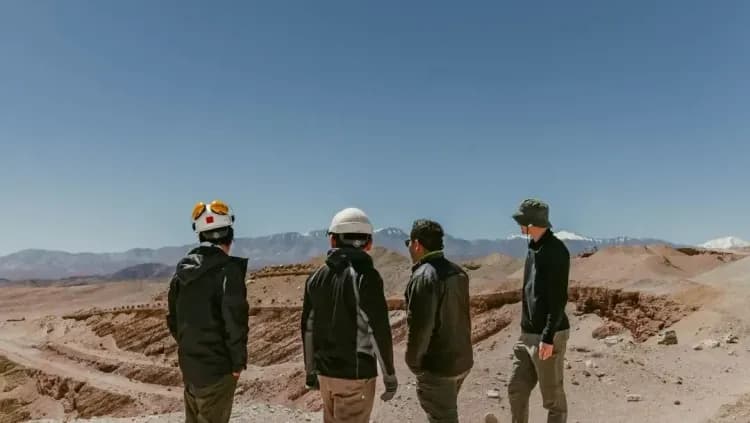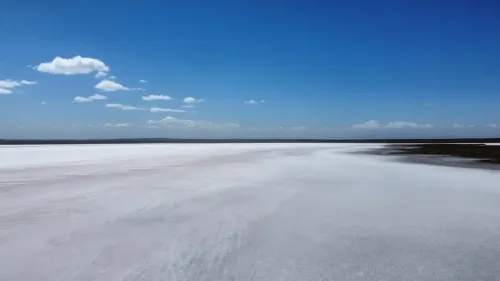The event “Mining, Heritage and Community: Dialogues for a Sustainable Transition in the Puna,” organized by the specialized outlets Prensa GeoMinera and Jujuy Económico, was held at the amphitheater of the Faculty of Engineering. It brought together academics, students, university authorities, government officials, and representatives of the mining sector.
By Panorama Minero
On November 11, a space was created that brought together key actors from the academic, community, and government sectors linked to mining activity in the province. The event, titled “Mining, Heritage and Community: Dialogues for a Sustainable Transition in the Puna,” took place at the Faculty of Engineering of the National University of Jujuy (UNJu).
Academics, related-degree representatives, researchers, company representatives, and community members shared experiences and perspectives, agreeing that mining sustainability in Jujuy cannot be built through imposition but through mutual recognition, community governance, and respect for the region’s cultural and natural heritage.
During the event, speakers from related academic programs emphasized the need to align university training with the real demands of the sector, promoting an interdisciplinary, technology-integrated, and socially responsible approach to mining.
Meanwhile, representatives from Mina Pirquitas—together with community leaders and local authorities—shared concrete experiences related to participation, intercultural dialogue, and collective decision-making. Edgardo Volpi, Community Relations and Human Resources Manager at Mina Pirquitas, highlighted dialogue as the transformative pillar of the relationship between the company and the territory.
“We have made sustained efforts over the years to improve conditions in the Puna, not through logic of imposition, but through co-construction with the communities,” he said. He added that the deepest challenge is not technical but cultural: “It’s about integrating the pressures of the mining business with the cultural essence of each community. And that is only possible when mutual trust is built and the other’s truth is acknowledged.”
Along the same lines, Telma Zemplin, Community Relations Superintendent at the mine, spoke about the company’s work with 17 communities in the Rinconada department and one in Susques, Coranzulí. “Our approach is not welfare. It is intercultural, participatory, and legacy-oriented,” Zemplin said as she presented the Community Relations Plan, collectively designed through participatory dialogue tables established since 2019.
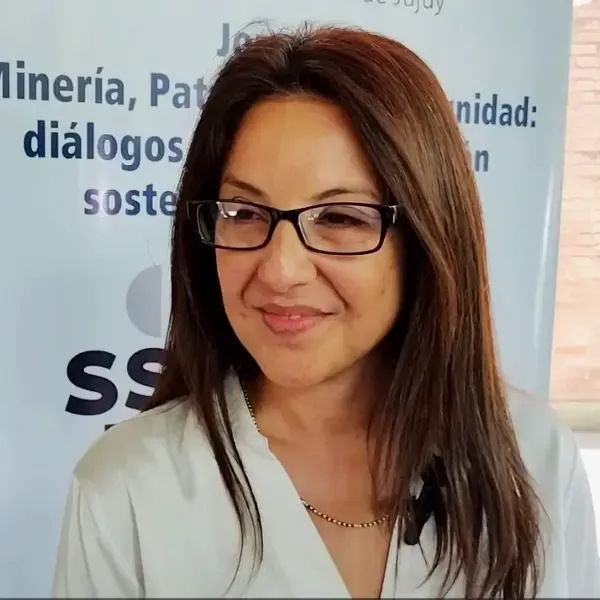
Zemplin explained that these dialogue instances—one for the Pirquitas jurisdiction and another for Rinconada, following community decisions—made it possible to build shared agendas addressing structural issues of the highlands. She mentioned achievements such as the Camel Program to strengthen llama and alpaca breeding, initiatives for cultivating Andean crops adapted to the local ecosystem, an Economic and Social Development Fund, a high-altitude Indigenous tourism plan, and training programs for intercultural leadership.
“These are not projects imposed by the mine but built together with the communities, which have also moved forward with their own community life plans,” she said. She highlighted a key milestone: the creation of the Puna Sustentable Foundation, an initiative driven by the communities themselves with company support, designed to guarantee the sustainability of these programs beyond the mine’s closure.
From the Santo Domingo community, Nilda Zerda—responsible for the Community Life Plan—shared first-hand the process of collective empowerment. “It took us years to raise awareness within the assembly about what a life plan is. But today we prioritize our needs, distribute responsibilities among leaders, and no longer depend on a single person,” she said.
She acknowledged that the process had not been easy and involved moments of conflict, mistrust, and tension. But thanks to training efforts promoted along with the mining company and the State, they learned to organize themselves as a community. She emphasized the symbolic importance of participating in spaces like this forum. “Being here, sharing our experience is a huge step. We are not just beneficiaries; we are actors,” she affirmed.
Comprehensive training and practical experience
Geologist Patricio Herrera, Director of the Geology program at the National University of Jujuy (UNJu), presented an innovative proposal to strengthen the practical training of future professionals. He recalled that after the pandemic restricted access to internships in mining companies, his team designed a flexible system connecting students with public institutions such as SEGEMAR, the National Secretariat of Mining, and the Jujuy Institute of Geology.
He explained that this model—now digitalized and managed through the Guaraní System—ensures transparency, traceability, and equitable access to internships. He also announced a historic milestone: the ARCU-Sur international accreditation of the Geology degree, the first ever for UNJu, opening doors to regional agreements, student mobility, and collaboration in responsible mining and geological heritage.
He pointed out that with a unified platform on UNJu Virtual, accessible to all Engineering programs; the system seeks to become a model of integrated, digital, and territory-engaged training. “Geology is not practiced only in the field or the lab. It is built through dialogue with the community, the State, and industry,” Herrera concluded.
The forum was launched by the Dean of the UNJu Faculty of Engineering, Alejandro Vargas, and the President of the Jujuy Mining Chamber, Carlos Carrillo, among other authorities.

Carrillo highlighted the current strength of the province’s mining sector, noting that Jujuy is the national leader in lithium carbonate production and third in mining exports, with diversified operations in lithium, silver, zinc, copper, and gold. He emphasized that mining in Jujuy generates more than 9,000 direct and indirect jobs and is grounded in strategic partnerships with communities, participatory environmental management, and workforce development.
He stressed that sustainability is the sector’s core agenda, with a long-term view, respect for cultural heritage, and commitment to local identity. He also called for strengthening a regional strategy with Salta, Catamarca, and San Juan, eliminating “internal customs barriers” to facilitate mobility for workers and suppliers. He then highlighted legal certainty and Jujuy’s regulatory framework as key to attracting investment and ensuring that mining continues to be a driver of inclusive and sustainable development.
Mining as part of Puna identity
Dr. Carlos Angiorama, a CONICET archaeologist, presented findings showing mining activity in the Puna dating back to the 10th century AD, strengthening the notion that mining has been part of local identity for millennia.
He highlighted that, for the first time, he could share with the mining sector the results of two decades of research in southern Puna Jujeña. Angiorama, a professor at the National University of Tucumán, directs an inter-institutional project involving researchers from the universities of Córdoba, Buenos Aires, Jujuy, and CONICET.
He explained that the team studies not only pre-Hispanic mining and metallurgy but also the social, economic, and territorial dynamics that shaped community life from the earliest settlers through the end of the colonial period in an area covering southern Pozuelo, the Carahuasi Range, and the Santa Catalina River basin.
“Mining is not something new in the Puna. It has been part of the identity of these communities for at least a thousand years,” Angiorama said, noting that in places like Timón Cruz, in the Santa Catalina department, evidence has been found of vein gold extraction and gold panning dating back to the early second millennium. This activity was continued by later cultures such as the Chichas, the Inca Empire, and the Spanish, and persists today in traditional mining practices such as small-scale gold panning.
He emphasized one of the most valuable contributions of the project: direct collaboration with local communities. Over the years, the team has co-created community interpretation centers in Rinconada, Pan de Azúcar, and Timón Cruz, where local history is displayed through archaeological findings and oral histories. In September 2025, a new center was inaugurated in Santo Domingo in collaboration with Jujuy’s Department of Heritage, SSR Mining Puna, and the local community.
“These spaces do not replicate the same narrative. Each one reflects specific themes arising from dialogue with residents and the results of our research. They are living tools of memory, identity, and education,” Angiorama explained.
He noted that national legislation requires archaeological impact studies at all stages of mining projects—an essential regulation in a region where nearly all sites with mineral potential overlap with areas of ancient human occupation.
“Almost all areas we have recorded archaeologically now have mining concessions or are under exploration. The heritage is there, underground. The challenge is ensuring that economic development does not erase that millennia-old memory or alter the ways of life of current communities,” he said.
Angiorama emphasized that Puna communities not only coexist with mining but recognize it as part of their family and collective history. “It is common for someone in the family to have been a miner—whether in Inca times or yesterday. That legacy is alive, and that is why in every interpretation center, mining is one of the themes people want to highlight,” he concluded.
Elsewhere in the program, engineer Jorge Hopkins, Director of the Mining Engineering degree, offered a critical reflection on the “Challenges and opportunities of the mining industry.” Rejecting the view of mining as merely a supplier of resources, he argued that the university must assume an active role as a body for consultation, development, and social balance. “Opportunities will come, not wealth,” he warned, pointing out that the main barrier for mining projects in the Puna is the lack of realistic information and the creation of false expectations within communities.
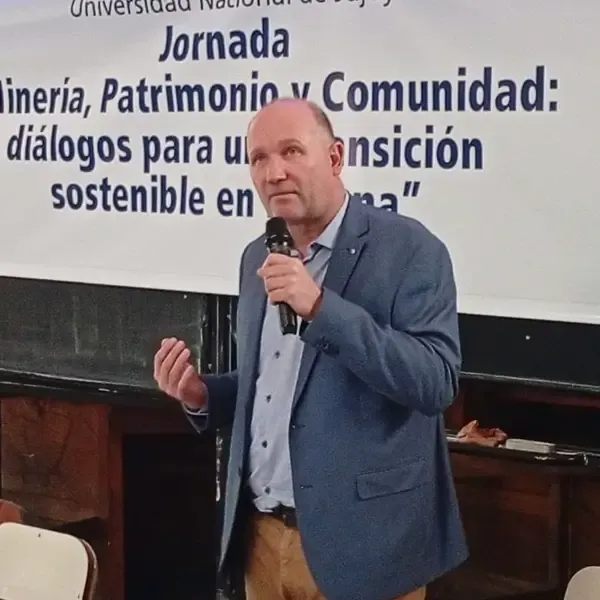
He stressed the need to educate society about the real stages, risks, and benefits of mining, and to strengthen ties between academia and the private sector to align professional training with market demands. He also noted that modern mining is profoundly interdisciplinary, involving quality assurance, safety, industrial engineering, chemistry, and other key areas across all phases of responsible mining projects.
Also presenting were engineer Miguel Soler, former President of the Federal Mining Council (COFEMIN), who discussed Corporate Social Responsibility in mining territories; representatives of the Argentine Mining Workers’ Association (AOMA), including Secretary General Luis Tinte and Jairo Ibarra, Social Action Secretary of the Jujuy division, who provided the workers’ perspective.
The participation of journalist and scholar Carlos Campolongo, who planned to reflect on “Institutional Communication: Transparency as a Value of Legitimacy,” was also scheduled, as well as Carlos Aschero’s presentation on “Recent Archaeological Research in the Jujuy Puna,” among others.


